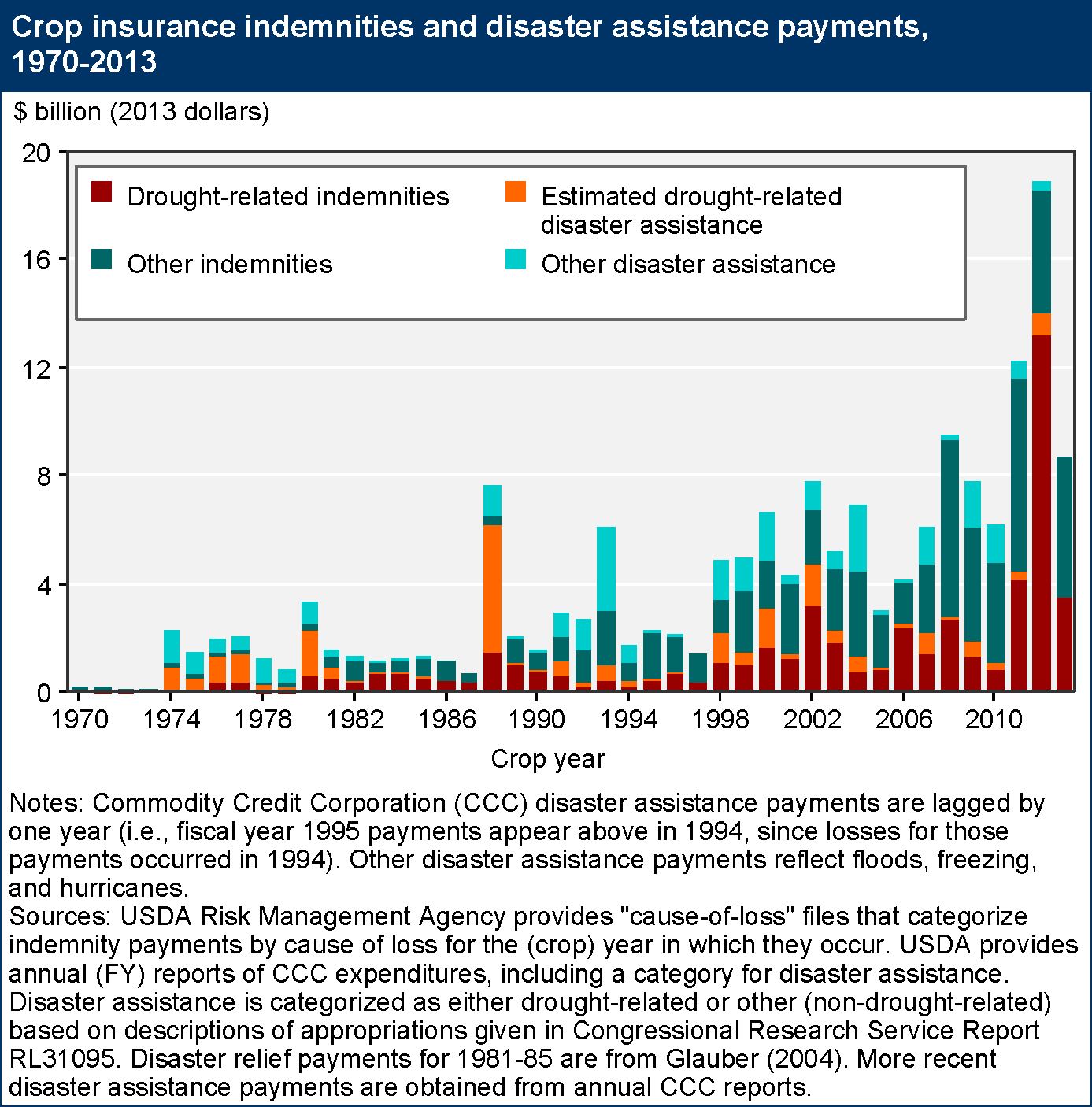Crop insurance indemnities and disaster assistance payments reflect the impact of drought on crop farms
- by Economic Research Service
- 2/28/2014

Drought is the leading single cause of production losses to crop farms, followed by excess moisture, hail, freezes, and heat. Over the past four decades, a portion of the farm losses from all these weather-related causes have been covered by a combination of crop insurance and disaster assistance payments. Over this period, crop insurance has gradually grown in significance and is now a major component of the Federal safety net for crop farmers. The rise in total insurance indemnity payments is due to a combination of expanded enrollment in crop insurance, increased liabilities due to higher yields and commodity prices, and a series of major droughts in recent decades, capped by the 2012 drought. More than 80 percent of the acres of major field crops planted in the United States are now covered by Federal crop insurance, which can help to mitigate yield or revenue losses for covered farms. Droughts also have a major impact on livestock producers, principally through their effect on feed prices. (The accompanying chart does not include livestock-related assistance or pasture/rangeland indemnity payments.) This chart updates one found in The Role of Conservation Programs in Drought Risk Adaptation, ERR-148, April 2013.

